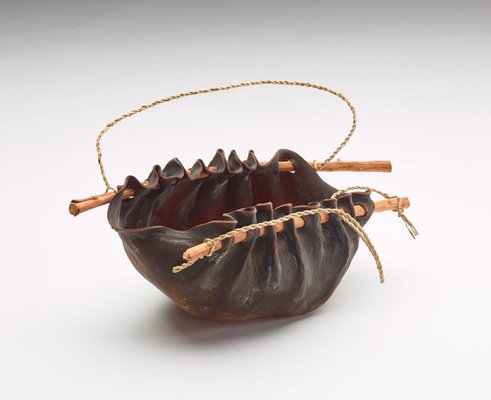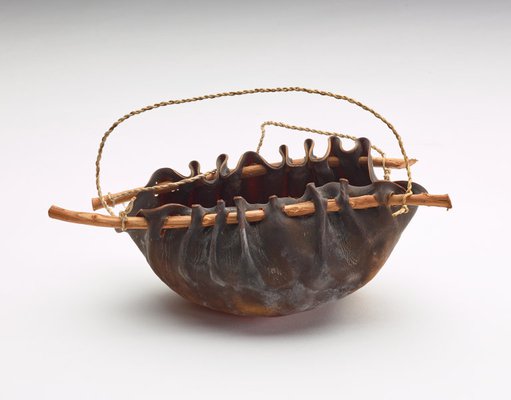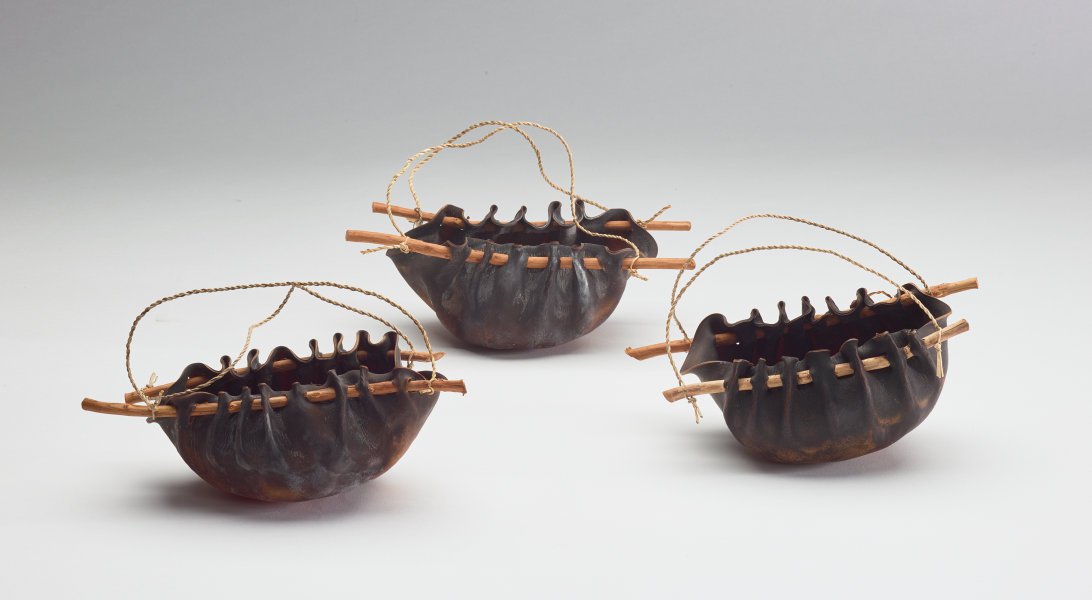Title
Water Carriers
2011
Artist



-
Details
- Place where the work was made
-
Launceston
→
Tasmania
→
Australia
- Cultural origin
- Trawlwoolway, Southeast region
- Date
- 2011
- Media category
- Weaving
- Materials used
- bull kelp, tea tree and river reed
- Dimensions
-
dimensions variable
:
a - water carrier, 24 x 12 x 8.2 cm
b - water carrier, 24.4 x 12.1 x 9.5 cm
c - water carrier, 24 x 18 x 8.5 cm
- Signature & date
Not signed. Not dated.
- Credit
- Purchased with funds provided by the Aboriginal Art Collection Benefactosr 2012
- Location
- North Building, ground level, Yiribana Gallery
- Accession number
- 185.2012.a-c
- Copyright
- © Vicki West
- Artist information
-
Vicki West
Works in the collection
- Share
-
-
About
In the stories of history it is often told that no Tasmanian Aboriginal people remain. It is said that Trucaninny and Woureddy were the last of the Aboriginal people. While it is true that a great number of Aboriginal people passed away on the colonial frontier, a strong and diverse Aboriginal community remains in Tasmania.
The sculptural works of Vicki West are testament to the tenacity of this community and the strength of their cultural inheritance. The formation of kelp into vessel forms is something that is unique to Tasmania. West first learnt these skills as a cultural workshop with elders and other members of the Aboriginal community and is now one of the most recognised artists working with this technique.
West’s 'Water Carriers' 2011 are made with bull kelp collected at specific locations on Tasmania’s east coast. To preserve the natural environment West will only use kelp that has been washed up onto the beach. She then moulds the kelp into the forms that reflect those made by her ancestors. As the kelp dries the translucency of the material is revealed.
-
Exhibition history
Shown in 2 exhibitions
Our spirits lie in the water, Art Gallery of New South Wales, Sydney, 15 Nov 2014–01 Nov 2015
Yiribana Gallery: opening collection display, Art Gallery of New South Wales, North Building, Sydney, 03 Dec 2022–29 May 2023
